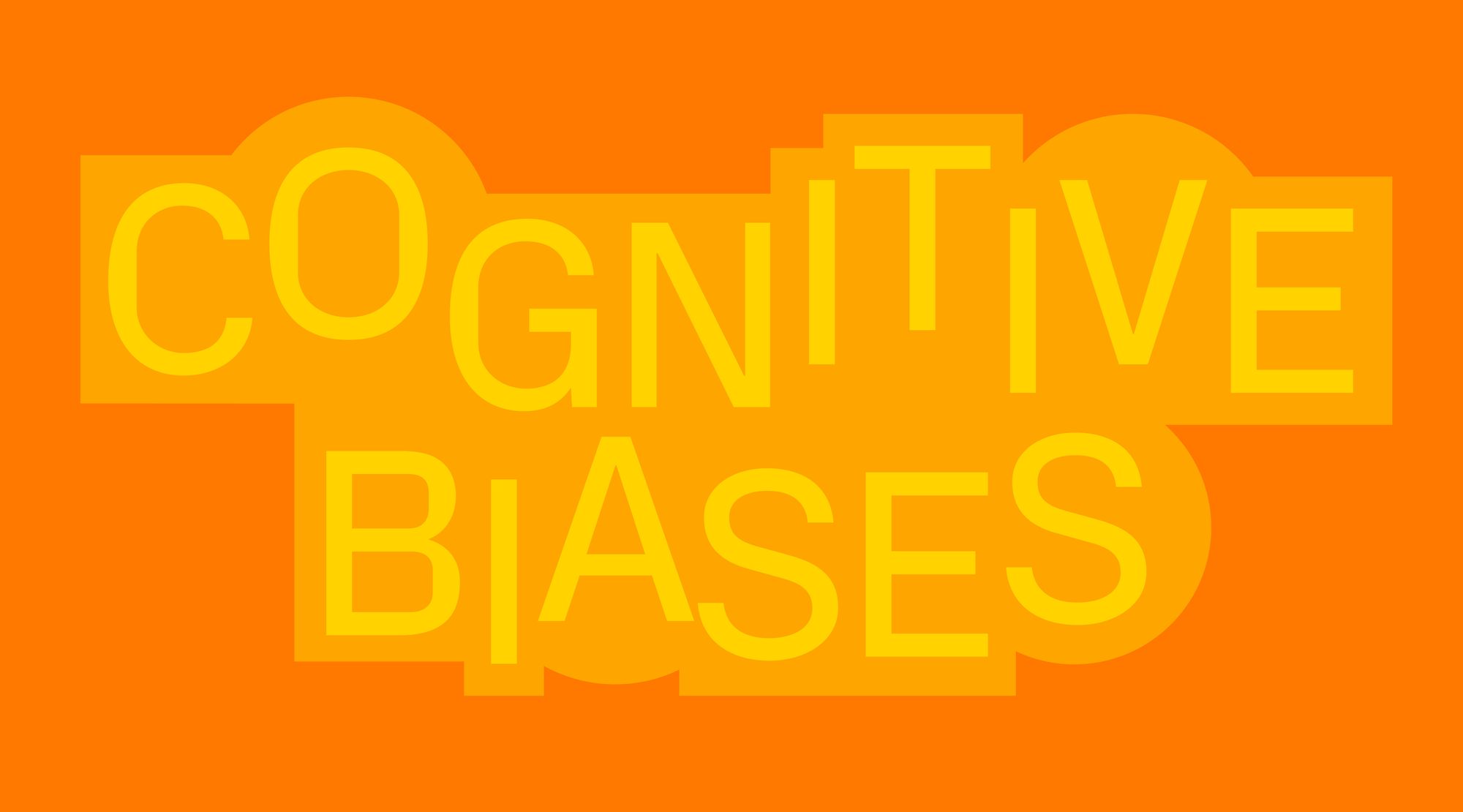8 common cognitive biases in the UX and ways to smooth them up
Learn more about the nastiest biases the human brain is prone to and get a grip on them in your daily UX research and design processes.

Have you ever bought a digital product without proper research based on the first two reviews you saw in the app store? If yes, you can blame or thank the Anchoring fallacy for your new subscription, as it makes you stop searching and feel pleased with the first piece of information you see. Cognitive biases are often considered harmful misconceptions that prevent us from thinking clearly and owning our decisions, but they can also be used to smooth over everyday experiences and reduce the time we spend on routine tasks. But where is the happy medium between the good and the evil sides of biases, and how can we use them in the right way?
To explore the vast and contradictory topic of biases in UX research and design, we’ve turned to Siddartha Kandikonda, a Design Lead at Sharechat, and Garik Avetisyan, Co-Founder at Flexy Global.


The most common brain tricks UX-ers deal with
Cognitive biases are not exactly new, as they were first recognized in the 1970s. They occur when information guides users to a pre-calculated conclusion using shortcut mechanisms that our brain developed for fast decision-making. Those shortcuts are not perfect and can cause errors, which is why we call them cognitive biases. I envision them as bridges leading from a visual cue to a faulty conclusion.—Garik Avetisyan, Co-founder at Flexy Global
From the evolutionary perspective, such bias-led optimization is an advantage, but in a world buzzing with information, it can significantly backfire. Below you’ll find a list of the major biases UX designers and researchers can try to avoid in design, or use to guide users and influence their experience. Both Garik Avetisyan and Siddartha Kandikonda contributed their opinions to the list.
Confirmation-seeking bias is the tendency to actively seek out information that confirms our beliefs or hypotheses while disregarding evidence that contradicts them. A designer or researcher might consciously or subconsciously ask respondents specific questions that will lead to the desired or the most obvious result.
The Halo effect interferes with a person’s initial favorable impression of a brand or product and influences their perception of its individual features or attributes. If a user likes the design of a website, they may assume that the content and functionality are also of high quality, even without exploring them in detail.
Due to the Anchoring bias, we rely too heavily on the first piece of information we encounter when making a decision or judgment, even when that information is irrelevant or misleading. In UX design, this can be used in pricing strategies. For example, showing a higher original price next to a discounted price can make the latter seem like a better deal.
The Isolation effect proposes that it is easier for users to remember an object that differs from multiple similar-looking elements. This is used in UX design to emphasize important information or actions. In Readymag, every widget has its own color and icon in the Widget panel so users can easily differentiate types of widgets while in workflow.
Social biases, namely social proof, conformity bias, and groupthink all involve us being influenced by the presence or actions of others. The groupthink tendency might be described along with the Bandwagon effect, in which people tend to align their beliefs and behaviors with those of a group. By showing that others are buying a product or service, businesses can encourage more users to do the same.
The recognition over response bias suggests that it’s easier for users to recognize things rather than having to recall something from memory. Designers use familiar design elements as cues to make the UX easy to use. For instance, product designers at Readymag have chosen layers to enable users to create a visual hierarchy because layers are familiar to most of the digital editors' users, and thus recognition saves them time and effort.
The Sunk cost fallacy is to blame when we continue investing time, money, or effort into an idea or activity, even when we see that it leads nowhere, because we’ve already invested resources into this thing. This is quite an unfavorable bias, as it leads UX-ers to stick to their ideas and disregard common sense or contradictory data. However, it also leads users to continue with a product since they’ve already taken pains or paid to get access.
The Negativity bias is another preconception that gives more importance to negative experiences or information than positive ones, which can have an impact on our thoughts, emotions, and actions. If the first experience with the product interface was negative, users will most likely remember that more than all the nice stuff you have up in your sleeve.
It’s crucial for designers to avoid using biases in a way that could be harmful or manipulative for users. This means steering clear of any strategies that might deceive or mislead users into taking actions that aren’t in their best interests. Moreover, designers should aim for transparency and openness when making design choices. They must communicate the use of biases in their designs and how they might impact user behavior. Users should be provided with the option to opt out of any biased design components or features. —Siddartha Kandikonda, Lead designer at ShareChat
Avoiding the influence of your own misconceptions
All of us—both those who shape products, and those who use them—are prone to the same blind spots. But there’s a big difference between a user and a designer: designers have to identify and get rid of many nuances to work effectively. Siddartha Kandikonda accentuates three main biases you as a designer should watch out for in yourself:
Optimism bias
Optimism bias makes designers presume that users will always act logically and follow the intended user paths without taking into account the possibility of errors, distractions, or user mistakes.
Confirmation bias
This bias, discussed above, might seriously interfere with research work, as it deals with developing user feedback to affirm preconceived notions about user requirements and behaviors rather than exploring and considering conflicting information.
Illusory Superiority bias
This fallacy causes professionals to overestimate their abilities or knowledge when compared to others, and plays quite a trick on those who’ve been in the industry for a long time.
For any UX designer, it’s more than crucial to minimize the influence of their own biases on UX research and design activities. With the help of Garik Avetisyan and Siddartha Kandikonda, we’ve formulated a 4-step strategy to mitigate negative biases and deliver a more effective and inclusive design:
- Become aware of your own biases through self-education on the topic and self-analysis during user interactions, and track how these biases might impact your research and design activities.
- Seek out diverse perspectives by tightly collaborating with team members of different backgrounds, listening to their input, and fostering a transparent and open design process.
- Rely on data and evidence to form design decisions that can help to reduce the influence of personal biases, using user testing and analytics.
- Use double-blind testing, randomization, and counterbalancing to ensure that your research is as objective as possible.
Discover more about cognitive biases
Siddartha Kandikonda:
This book is a must-read for anyone interested in cognitive biases and their impact on decision-making.
The episode of The Human Factors Podcast with Nick Roome
This episode discusses topics related to human factors and UX design, including cognitive biases and their impact on design decisions.
The Social Dilemma on Netflix
A documentary that explores the impact of social media on our behavior and touches on the use of cognitive biases in designing addictive interfaces.
Garik Avetisyan:
‘Influence’ is a seminal work in the field of cognitive psychology and has been highly influential in shaping our understanding of human decision-making and behavior.
Neuro Web Design: What Makes Them Click? by Susan Weinschenk
The book gives an introduction to the principles of cognitive psychology and neuroscience as they relate to UX design.